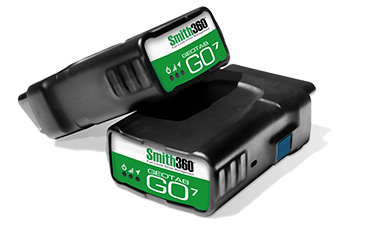
After a long wait, the Federal Motor Carrier Safety Administration (FMCSA) published the final electronic logging device rule — or ELD mandate — in December 2015. Fleets had until December 2017 to implement certified ELDs to record HOS. Fleets already equipped with electronic logging technology will have until December 2019 to ensure compliance with the published specifications.
The new electronic logging device (ELD) ruling by FMCSA requires carriers and drivers who currently keep paper logs to switch to ELDs to record their hours of service.
ELDs simplify compliance, increase productivity and most importantly, improve driver safety. By automatically recording data about when a vehicle is in operation, drivers are forced to take regular breaks and can avoid pressure to work longer hours than permitted. In addition, ELDs reduce the need for drivers and fleet managers to retain paper shipping documents, receipts for fuel, and supporting documents that verify on-duty driving time.
Here are some important facts to know about the technology and how the new ELD mandate affects you.
What is an ELD?
ELDs allow drivers to electronically record their hours of service. They simplify compliance with the FMCSA, increase productivity and most importantly, improve driver safety.
By automatically recording data about when a vehicle is in operation, drivers are forced to take regular breaks and can avoid pressure to work longer hours than permitted. In addition, ELDs reduce the need for drivers and fleet managers to retain paper shipping documents, receipts for fuel, and supporting documents that verify on-duty driving time. Although many fleets have been using ELDs for a while now, many are still using paper logs.
ELDs typically come in one of two formats:
- An all-in-one package that includes a device with a pre-loaded mobile app
- A “Bring Your Own Device” solution that fleet managers can install on existing hardware. The vehicle tracking — or telematics — device connects to the vehicle, the fleet-management software and a mobile app. The mobile app typically runs on a tablet or smartphone and is connected through a wireless or cellular connection.
Data is transferred through this wireless or cellular connection and is typically stored using a combination of the device itself, back-office servers and the cloud.
The ELD synchronizes with the engine-control module and GPS to capture data — such as the vehicle’s movement and mileage — and then transfers all of the collected data electronically.
Driver records are certified at the end of each 24-hour period and retained for seven days. Reports can be displayed on-demand for safety officials whenever requested.
In addition to simplifying compliance, reducing administrative costs and increasing the accuracy of overall record keeping, ELDs increase driver productivity and efficiency, as well as improve driver safety. Arrival and departure times are tracked, as well as delivery status. Communication with drivers and vehicle maintenance and resulting uptime is also improved.
Does Your Existing ELD Meet the New Requirement?
The FMCSA requires ELDs to conform to set technical specifications. They must also be certified by the manufacturer and registered with the FMCSA.
The FMCSA itself doesn’t guarantee that any device is compliant to the new ELD rule. Under the regulation, the ELD provider/manufacturer certifies the device and then registers it with the FMCSA. As a result, ELD providers are responsible for verifying that their solution meets the technical specifications in the mandate.
There is a list of self-certified and registered ELDs on the FMCSA website, but buyers should do their own research to make sure the ELD they purchase is compliant. (If you're searching for the Smith360™ ELD solution on this list, search for the Geotab Cloud ELD.)
If your drivers currently use an Automatic On-Board Recording Device (AOBRD), they must be upgraded to ELDs by December 16, 2019. These drivers and fleets are given two extra years to comply with the new mandate over carriers still using paper logs.
Cost and Benefits of ELDs
When you purchase an ELD solution, you will need to buy the device itself, in addition to a monthly software fee and professional installation. The cost savings associated with having an ELD solution in place, however, can be substantial.
Not only will the productivity of your fleet improve, but drivers will also benefit from better fuel efficiency and improved safety. With an ELD, hours of service regulations are more strongly enforced, drivers are required to take breaks when needed, and driver fatigue is reduced as a result.
Fewer fatigued drivers on the road will ultimately save lives. The FMCSA estimates that adopting ELDs will save 26 lives and prevent over 1,800 vehicle crashes annually on U.S. roads and highways.
Smith360™ Driver Management Program
Smith System’s Smith360 certified ELD solution, Geotab Cloud ELD, provides advanced GPS location and telematics to monitor driver behavior so managers can more accurately track your fleet.
Through route optimization, accident detection and notification, and fuel-tax reporting, driver safety and gas mileage will also improve. By adopting Smith360, fleet managers will not only be in compliance with the new mandate, but they'll also be able to better manage their fleet by monitoring drivers to ensure they are obeying speed limits, adhering to hours of service requirements and mandatory breaks.
To learn more about the new ELD requirement or Smith System’s Smith360 Fleet Driver Management Program, contact our team of experts today.









